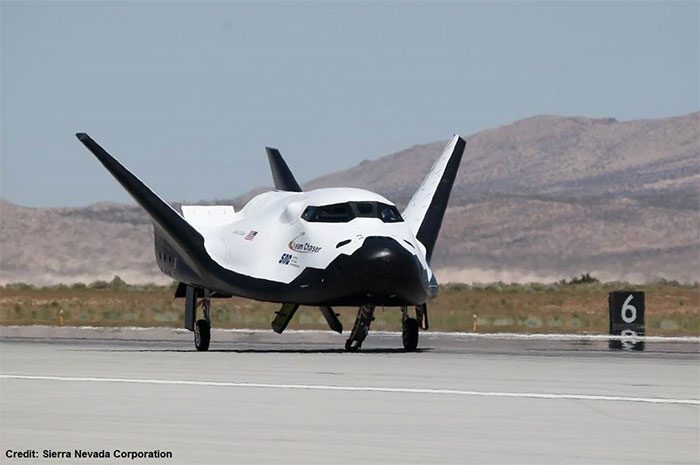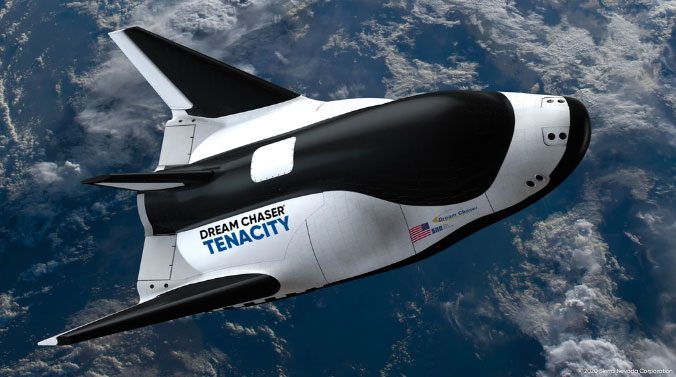The Dream Chaser commercial spaceplane, designed by the American company Sierra Space, is set to deliver cargo to the International Space Station (ISS) and collect and incinerate space debris.
Dream Chaser could soon embark on its inaugural flight, as engineers are making final adjustments before transporting it to NASA’s space center in Ohio, located in the northeastern United States.
A Technological Gem for the ISS

This technological gem will primarily function as a cargo distributor to the International Space Station (ISS), which orbits at an altitude of 410 km. (Photo: GEO).
According to Franceinfo, after the ISS is decommissioned, expected in 2031, the spacecraft will continue to deliver supplies to a series of new space stations currently under construction.
Clearly, the launch of the Dream Chaser spaceplane demonstrates the United States’ determination to maintain its competitive edge in the space industry against rivals like Russia and China. The machine is designed to carry out missions that can last up to six months in space.
Eliminating Space Debris
Space debris is a pressing issue for countries worldwide, posing significant dangers to space stations and the risk of falling back to Earth.
Many nations are investing heavily in research to find optimal solutions for removing debris from outer space. The technology equipped on the Dream Chaser promises to address this issue effectively and at a low cost.
In addition to being uncrewed, one of its unique features lies in its structure. The wings of this vehicle only deploy once it enters space. Similar to SpaceX’s Dragon spacecraft, Dream Chaser will be mounted atop a rocket during the launch phase from the ground.
Once in orbit, the spacecraft will deploy solar panels capable of generating energy. NASA also relies on Dream Chaser for space debris management.
As a result, a special module equipped on the spacecraft can collect up to 1,850 kg of debris, which it will then incinerate within Earth’s atmosphere.

This aircraft can also collect and process waste in space.
This is a new device aimed at destroying debris from thousands of satellites cluttering space.
Marking a New Phase in the Space Race
In the near future, engineers will conduct tests on the Dream Chaser at the Neil Armstrong Test Facility, a massive training center for spacecraft and next-generation aircraft.
This will allow them to assess various technical factors such as sound vibrations, thermal resistance, and the stability of the vehicle.
Subsequently, the spacecraft will be placed in a vacuum chamber, serving as a prelude to the anticipated first test flight in April 2024. If the mission succeeds, it will mark a new phase in America’s space race.
Currently, the United States is eagerly awaiting the next test of SpaceX’s Starship rocket. After a failed initial attempt in April, the world’s largest rocket is set to fly again. However, the Federal Aviation Administration (FAA) has yet to approve and grant a license for the flight.


















































